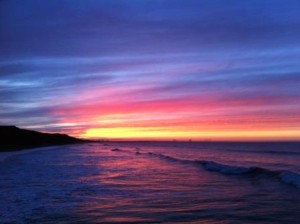Less than 2 months after the start of the WASH project our team have successfully completed the first of the two major field experiments at Saltburn-by-the-Sea, Yorkshire, UK between April 4-14th, 2016. Our international experiment team (Figure 1) consisted of Dr Chris Blenkinsopp and Kevin Martins (Bath), Dr Hannah Power (Newcastle, Aus) and Drs Jack Puleo, Brittany Bruder and Aline Pieterse (Delaware, USA).
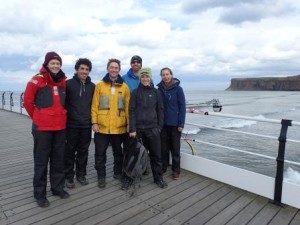
Saltburn was chosen as it is home to a beautiful Victorian pier (Figure 2) which enabled us to suspend a network of Lidar instruments approximately 6-7m above breaking and broken waves. We also chose Saltburn as it has one of the most consistent wave climates in the UK at beaches with existing piers, as well as a large tidal range which enabled us to install instrumentation on the beach in the dry at low tide and then wait for the tide to come in.

Over the first two days our major tasks were to complete a topographic survey and begin installing our instrumentation. On the pier we installed three SICK LMS511 2D Lidar which were suspended on scaffold frames 2m from the pier railing over the surf/swash zone (Figure 3). These instruments use a scanning eye-safe laser to obtain water surface measurements, 25 times per second at 1000's of locations along an 80m line parallel to the pier. This means that when waves are breaking under the pier between mid and high tide we were able to get fantastic data (effectively a slice through the waves for many thousands of waves up to approximately 2m in height) from the point of wave breaking to the maximum runup on the beach (examples to follow in a subsequent post). At times a 4th Lidar was also installed to monitor some interesting sediment transport and wave reflection processes occurring on a high tide shingle ridge, this instrument captured the process of wave reflection from a steep slope fantastically well. In addition to the Lidars, Hannah got to work setting up a camera on the pier to monitor inner surf and swash processes with the aim of adding surface velocity data to the information from the Lidar (Figure 4).
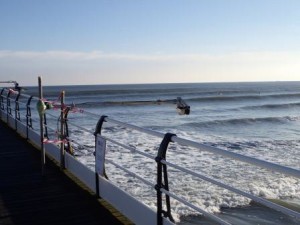

To measure in-situ hydrodynamic and sediment transport properties, 3 instrument frames (Figure 5) were installed on the beach below the pier but offset from the Lidar scan. On each frame we installed an acoustic Doppler velocimeter (ADV) to measure horizontal and vertical flow velocities, a pressure transucer (PT) to measure flow depths and an optical backscatter sensor (OBS) to estimate the concentrations of sediment suspended in the water. These data will be used to supplement the Lidar data and provide a link between wave shape and sediment transport parameters, hopefully enabling better predictions of sand movement on beaches. In addition to the beach frames, PTs were also installed along the pier legs to measure waves in deeper water, offshore of the Lidar array.

We were lucky enough to get excellent wave conditions throughout the experiment, varying from small, short period waves to larger (1.5m) longer period waves, generally with light or offshore winds providing ideal measurement conditions (Figure 6). Over the period from Thursday to Monday however it also provided ideal conditions for the region's surf community to be out in force (much to the jealousy of many of our team). Discussions were held with the local surfers to ensure that the instrument frames did not provide a safety hazard and the local surf businesses and websites assisted us by helping to inform all surfers about our experiment. Thanks to all who assisted and in particular Stephen Bulmer.
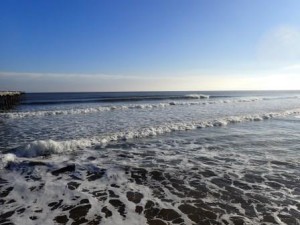
We are pleased to report that the experiment was a real success, we were incredibly lucky with the wave conditions and the Lidar instrument worked fantastically well, capturing what we believe to be the most detailed measurements of breaking and broken waves in the field ever obtained - watch this space from some preliminary Lidar data. While we were lucky with the wave conditions, the North East treated us to some pretty chilly weather which was particularly a challenge for our colleagues from warmer climes and got through all 6 layers after 14 hours on the beach. Nonetheless the sun did make some appearances and those on the late shift were treated to some spectacular sunsets.
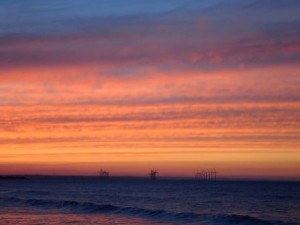
Saltburn is a beautiful, and as we discovered, very busy beach - over the course of the week we talked to hundreds of people all of whom were interested and supportive of our work. I think our team were all pretty blown away by the friendliness of the local people and businesses who made our time there a pleasure. Particular thanks goes to the Saltburn Cliff Lift staff for sharing their lunch space and giving free lifts up to cliff to tired legs, and Perveen Mian at Redcar and Cleveland Borough Council who made the experiment possible!


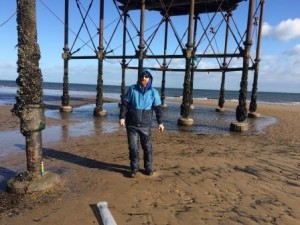
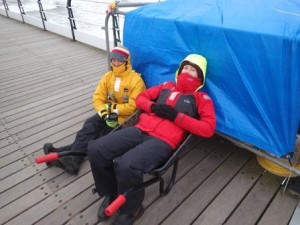
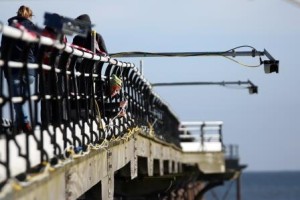
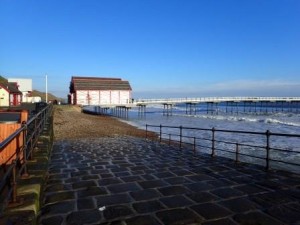
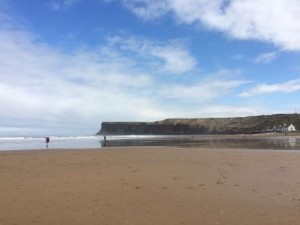
Respond
